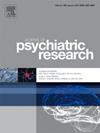利用机器学习建模,根据人格清单的反应识别童年虐待受害者。
IF 3.7
2区 医学
Q1 PSYCHIATRY
引用次数: 0
摘要
创伤是一种非常普遍的现象,在全球范围内与严重的并发症相关,尤其是创伤后应激障碍和其他常见的精神疾病。然而,由于情绪上的困扰,自我报告可能难以获得,因此识别虐待受害者的身份具有挑战性。更好地确认重大虐待史对制定治疗计划大有帮助。我们评估了一种基于机器学习技术的替代方法,该方法应用于同时获得的人格清单数据(明尼苏达人格清单,青少年版;MMPI-A),以检查与过去创伤暴露报告的一致性。对 733 名儿童和青少年住院病人进行了童年创伤问卷调查(CTQ)。统计和信息理论测量结果表明,每种类型的虐待--性虐待、身体虐待和情感虐待--都有独特的 MMPI-A 特征 "指纹"。就与智商的具体相关性而言,与我们之前的研究结果不同的是,性虐待阳性个体的 MMPI-A 升高最少,其次是身体虐待,而报告情感虐待的个体升高最多。我们开发了一个用于预测虐待史的初始分类器机器学习(ML)模型,与其他广泛使用的筛查方法相比,该模型具有同等的灵敏度。此外,我们还通过 PCA 和聚类分析表明,不同严重程度的情感虐待具有独特的人格特质混合物。因此,这种以 ML 为中介的分析方法可以利用各种不透明的数据源,通过实时信息对有虐待史的潜在高风险人群进行大规模检测。本文章由计算机程序翻译,如有差异,请以英文原文为准。
Using machine learning modeling to identify childhood abuse victims on the basis of personality inventory responses
Trauma is very common and associated with significant co-morbidity world-wide, particularly PTSD and frequently other mental health disorders. However, it can be challenging to identify victims of abuse as self-reports can be difficult to elicit due to emotional distress. Better confirmation of a history of significant mistreatment can assist significantly in treatment planning. We evaluate an alternate approach based on machine-learning techniques applied to personality inventory data (Minnesota Personality Inventory, Adolescent Version; MMPI-A) obtained concurrently to examine convergence with reports of past trauma exposure. The Childhood Trauma Questionnaire (CTQ) was administered to 733 child and adolescent inpatients. Statistical and information-theory measures showed that each type of abuse – sexual, physical, and emotional – had a unique “fingerprint” of MMPI-A profiles. In contrast to our previous findings in terms of specific correlations with IQ, individuals positive for Sexual abuse had the fewest MMPI-A elevations, followed by Physical abuse, while those reporting Emotional abuse had the greatest number of elevations. We developed an initial classifier Machine Learning (ML) model for predicting a history of abuse that demonstrates equivalent sensitivity compared to other widely used screening measures. In addition, we show via PCA and cluster analysis that the different levels of severity of emotional abuse present with unique mixtures of personality trait characteristics. Thus, this type of ML mediated analysis could permit at-scale detection of those at potential high risk of a history of abuse by use of real-time information, using a variety of nontransparent data sources.
求助全文
通过发布文献求助,成功后即可免费获取论文全文。
去求助
来源期刊

Journal of psychiatric research
医学-精神病学
CiteScore
7.30
自引率
2.10%
发文量
622
审稿时长
130 days
期刊介绍:
Founded in 1961 to report on the latest work in psychiatry and cognate disciplines, the Journal of Psychiatric Research is dedicated to innovative and timely studies of four important areas of research:
(1) clinical studies of all disciplines relating to psychiatric illness, as well as normal human behaviour, including biochemical, physiological, genetic, environmental, social, psychological and epidemiological factors;
(2) basic studies pertaining to psychiatry in such fields as neuropsychopharmacology, neuroendocrinology, electrophysiology, genetics, experimental psychology and epidemiology;
(3) the growing application of clinical laboratory techniques in psychiatry, including imagery and spectroscopy of the brain, molecular biology and computer sciences;
 求助内容:
求助内容: 应助结果提醒方式:
应助结果提醒方式:


